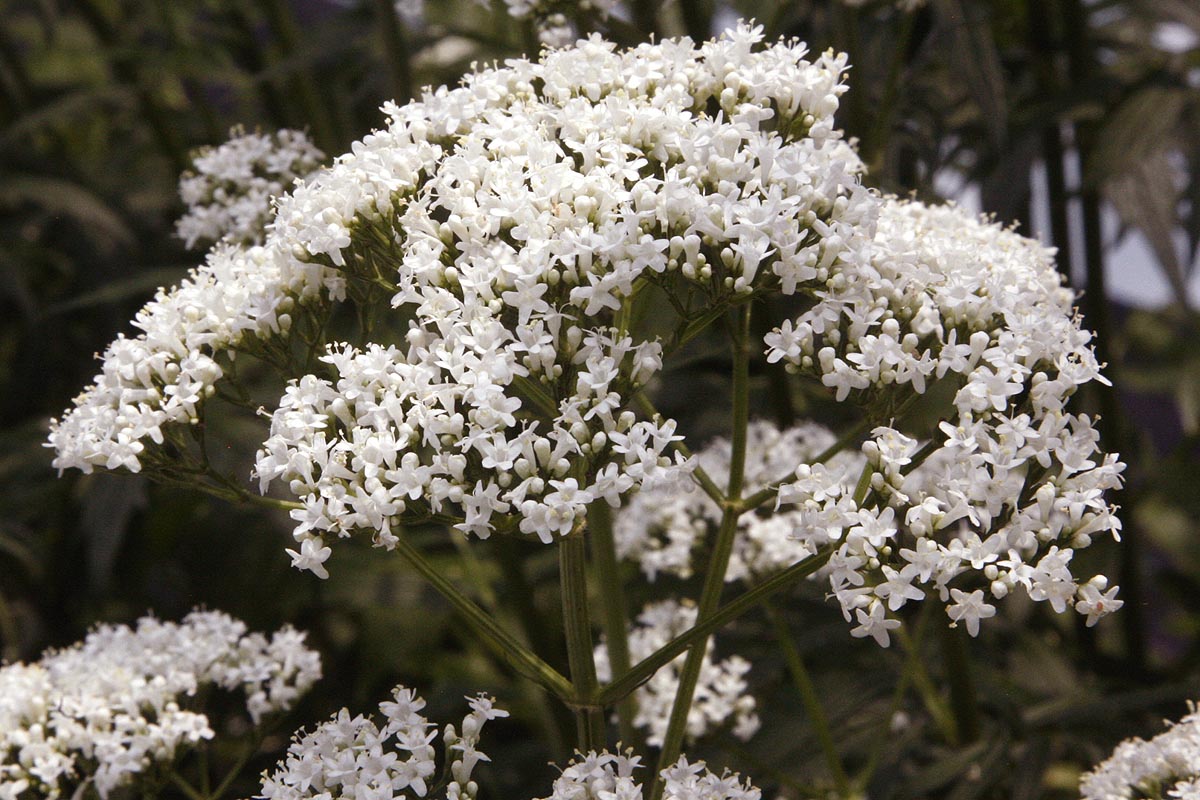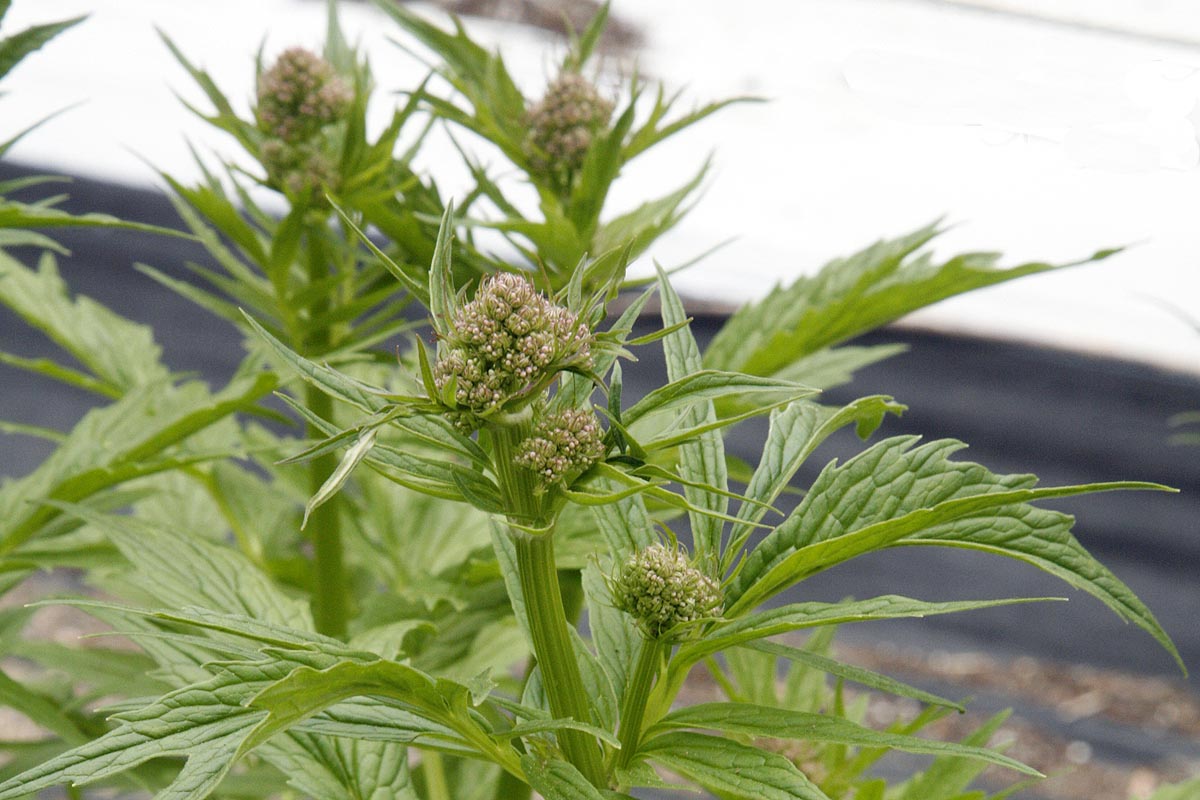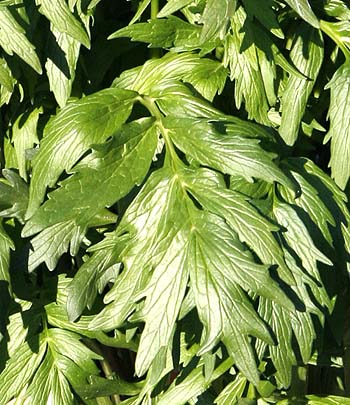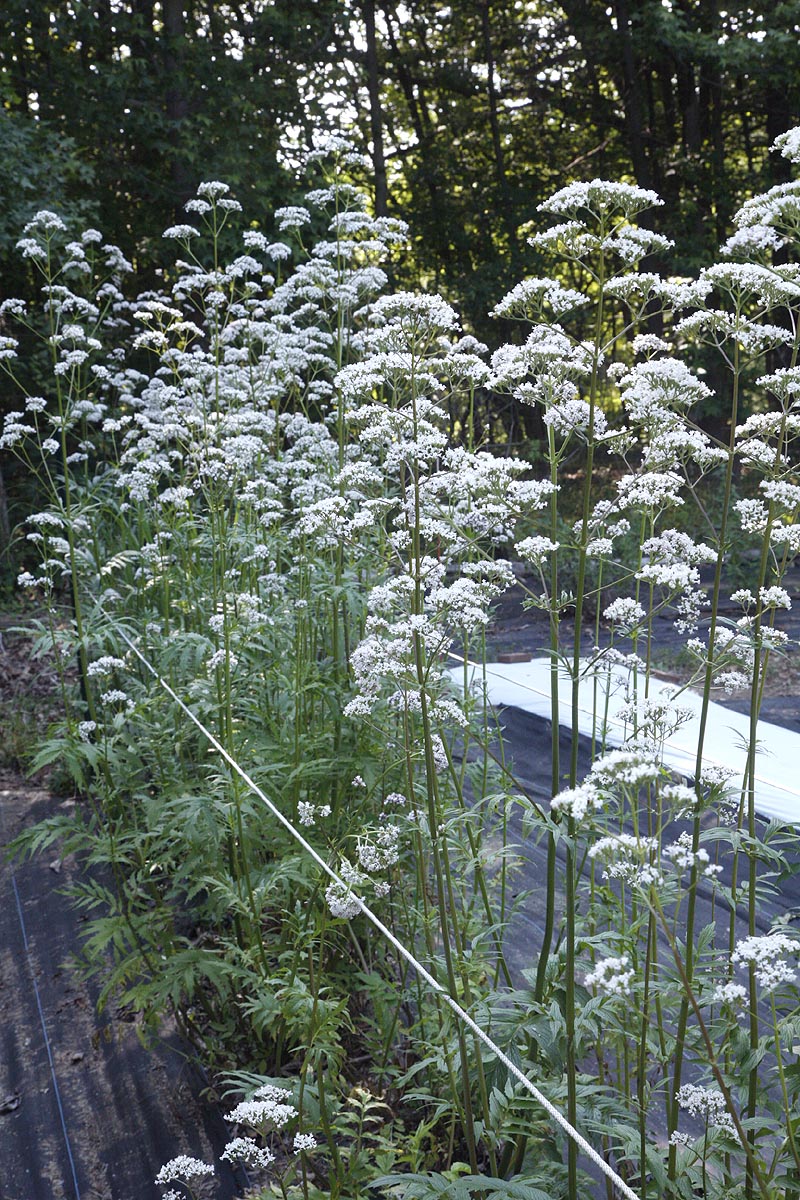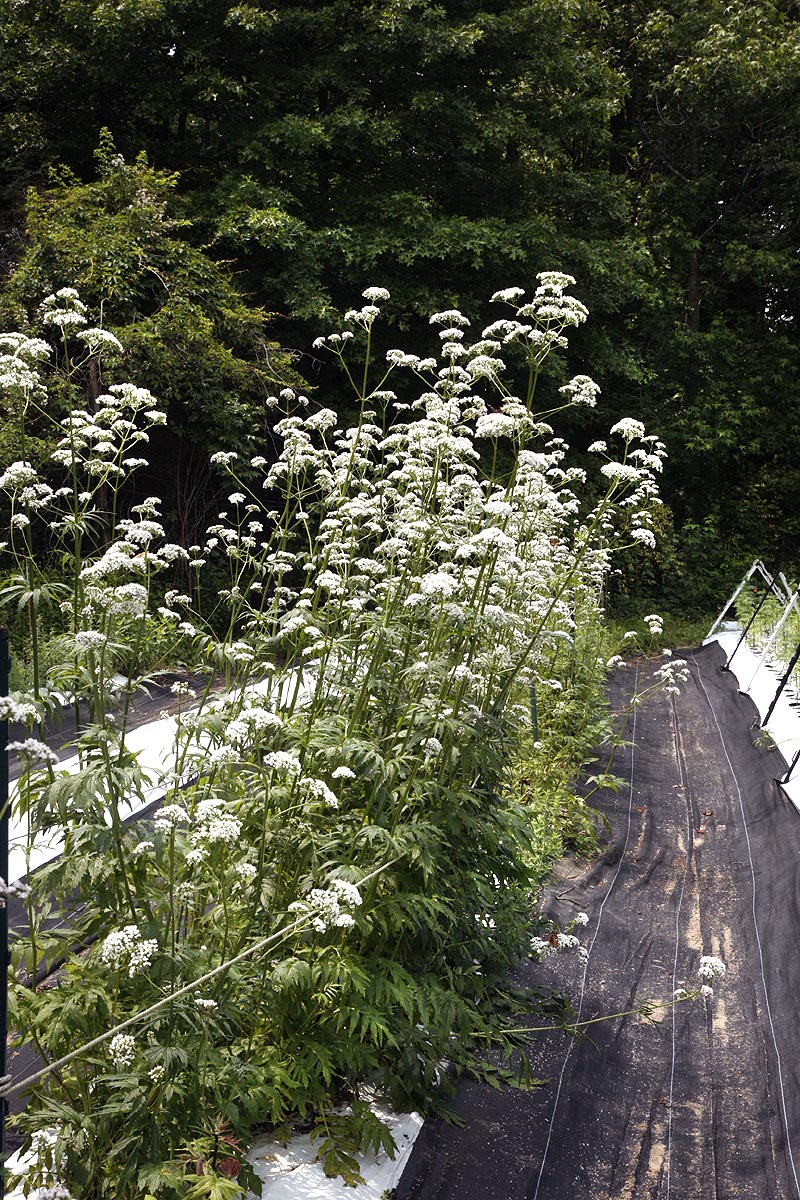A lovely tall perennial plant with masses of tiny highly perfumed flowers.
Easy to grow and needs little maintenance once established. Prefers full sun
and a richer soil and some water but can tolerate some drought will little trouble.
Flower stalks will most likely need staking but they produce masses of flowers
for long periods of time and are loved by butterflies and other beneficial insects.
Foliage is interesting, in large green mounds. Will spread by underground roots
if left to may need containing, will also self seed if not cut back after flowering.
Great plant for areas that need height.
Description of Valerian (Valeriana officinalis)
Large leafy perennial that blooms in the second year from seed. Produces mounds
of mid green leaves that are deeply divided heavily incised with serrated edges.
Leaves can be up to a foot in length are deeply veined and attractive in their
own right. In late spring the flower stems arise. These can grow up to 6 feet
in height are much branched with each branch ending in a flat umbel of tiny
white or pink flowers. Each flower is a tiny five petaled star shaped tube and
have a strong perfume like scent. Flowers from early June until September with
smaller flower stalks arising even later. Flowers are followed by small fluffy
seeds than easily float on the breeze.
Location and care of Valerian (Valeriana officinalis)
Valerian prefers full sun but will grow in slight to partial shade. Prefers
a good rich soil so amending with organic material, a good compost is best before
planting. Likes to be in a well drained location that remains slightly moist
does not like to dry out or have waterlogged soils. Using a soaker hose to water
from the base on a daily basis is ideal. Prefers a neutral pH soil if possible,
cannot tolerate waterlogged soils.
Valerian clumps can get fairly large from the second year onwards so ensure
there is enough space. Plant at least 2 feet apart Flower stalks are tall so
use as a back border or area where tall plants are suitable. The stalks are
hollow and not too strong so plant will most likely need staking especially
if it in a sheltered location.
If intending to dig roots for harvesting ensure soil is easy to work as plants
can become large and hard to dig out. Clumps can be divided in early spring
or fall with spring being the best time. Plants can spread using underground
rhizomes so ensure it is planted where spreading is not going to be a problem.
Will not easily stay contained if it is happy with its location.
Growing Valerian (Valeriana officinalis)
Valerian seeds are quite small and prefer to have light to germinate
so sowing indoors is recommended. Outdoor sowing can be done if enough seed
is available. Press seeds into the soil surface and keep watered until they
become small plants.
Sow indoors in mid to later winter, use medium potting compost and sow seeds
on surface or only very lightly cover. See general growing instructions for
more details. Germination is usually about 10-20 days depending on temperature
and other conditions. Young valerian plants have quite different leave appearance
to mature plants, the leaves are not divided, this only occurs as the plants
become bigger. It is easy to become confused and unsure of your plants, have
faith the leaves will change as they grow and become strongly divided.
Transplant when seedlings are large enough to handle. Grow on in individual
pots until plants are about 6 inches, and harden off before planting out. Ensure
enough space between plants as they can become quite large.
Harvesting Valerian (Valeriana officinalis).
If intending to harvest the roots grow in a location where it is easy to dig
them up again. Wait until at least the second winter before harvesting to allow
roots to enlarge. Cut down the flower stalks to allow the plant to concentrate
on root growth. Dig roots in early fall to
to winter of the second year. Plants
can be left for additional years is desired.
Medical Uses of Valerian (Valeriana officinalis)
Valerian has been used for a very long time as a calmative and sedative. It
is probably the strongest herbal sedative available. It is used to help calm
people down and allow them to sleep. It has been shown to encourage sleep, improve
sleep quality and reduce blood pressure. It is also used internally in the treatment
of painful menstruation, cramps, hypertension, irritable bowel syndrome. Externally,
it is used to treat eczema, ulcers and minor injuries
Most commonly the roots are used and fresh root is superior to dried. IT is
most commonly used as a tincture or the fresh roots which is the most effective
way of preserving the active ingredients. However the leaves and flowers also
contain some of the roots properties and can be used fresh during the summer
months. Tinctures of the fresh flowers can also be used. Leaves can be used
in cooking or more commonly in salads to promote some sleep. Eat such salad
at night not for lunch!
Valerian does not work on everyone, some people find it works as a stimulant
rather than a sedative.
Other Uses
Flowers are sometimes used in the perfume industry. Dried roots attract rats
and cats and can b used to as bait to lure them away from areas to be protected.
Other names.
Valeriana baltica, Valeriana exaltata






